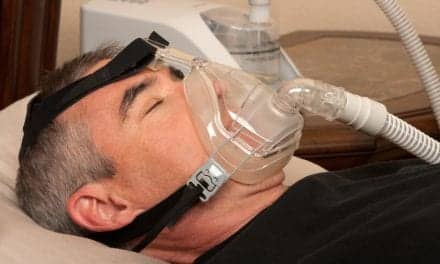
Both hospital and home respiratory services have been challenged recently with the economic downturn and the focus on reducing health care costs. The assumption that cutting reimbursement will have a positive effect on lowering overall health care cost is flawed, since the focus is on the cost of components rather than value of outcomes. Treating the patient effectively with the most appropriate therapy will have the greatest impact on cost by reducing unnecessary associated complications, such as rehospitalizations, and addressing the concurrent comorbidities. Respiratory professionals in both the hospital and home can work together to ensure that the patient has the appropriate assessment and treatment in the hospital and then transitions to the most effective products and services in the home.
Improving the patient’s transition of care from hospital to home and reducing 30-day rehospitalizations are strategies that have matured from “think tank” status to today’s operating reality for America’s hospitals. The health care reform bill (Patient Protection and Affordable Care Act of 2010) dramatically increased the emphasis on managing a patient’s transition from the hospital to home by incorporating reimbursement penalties for readmissions within 30 days of discharge.1 Starting in 2012, Medicare (CMS) and some Medicare Advantage plans will implement severe reimbursement penalties for a 30-day rehospitalization, beginning with 1% of all of a hospital’s Medicare billings, climbing to 3% by 2014. The focus is on patients with chronic disease, commonly referred to as “frequent flyers” with congestive heart failure, acute myocardial infarction, and pneumonia (COPD, coronary bypass grafting, percutaneous coronary interventions, and vascular procedures will be added in 2014). While the benchmark is currently on these three diseases, the penalty is magnified, since the hospital’s entire Medicare billings are at risk.
Hospital respiratory therapists have seen these frequent flyers return to their facility due to exacerbations that could have been prevented with proper education, products, and professional care in the home. Unfortunately, home respiratory care has not been reimbursed and providers have had to pay for services out of revenue from product sales. Payors are unable to identify and measure the value of respiratory services that were formerly bundled with higher equipment reimbursement. The lack of understanding by payors related to the value provided by the respiratory therapist is creating a clinical gap in the transition from the hospital to the home.
Readmission Costly
In 2009, a landmark study in the New England Journal of Medicine2 identified the US hospital 30-day readmission rates at 20%, costing the Medicare fee-for-service program more than $17 billion annually. Readmission rates of chronic disease patients with respiratory implications were even higher, with CHF at 27% and COPD at 23%. Length of stay was 0.6 days longer. The study also found that 90% of the readmits were unplanned, and what is most impactful is that between 40% and 75% of these readmits were thought to be potentially preventable if existing standards of care had been implemented. This study and similar issues presented by the Medicare Payment Advisory Commission (MedPAC) have generated a number of quality improvement projects to demonstrate new models of payment, continuity of care, and innovation opportunities.3 These CMS and privately funded projects are identifying ways to improve inpatient education, enhance the discharge instructions, identify the overall risk of readmission, ensure follow-up physician appointments, and build a comprehensive care plan in the home. Recent projects have focused on how the transition of care is managed in the home and what interventions improve the longer term outcomes and lower utilization of high cost resources.4
The foundation has been set for a purpose-driven program of patient care that prepares the patient to move from the hospital to the home. Hospital-based respiratory therapists will need to step up to the challenge of thinking outside the box (hospital) and ensure that patients have been educated on their disease, how to watch for complications, and when to contact their clinician, and can take responsibility for the management of their disease (within their capabilities). The hospital therapist will also need to assist the care team in assessing the patient’s clinical condition on admission and risk level upon discharge, so the home therapist can prioritize the intensity of services and select the appropriate products for the patient’s goals.
Improving the discharge instructions and coordinating the continuum of care for chronic disease patients are key elements in avoiding a rehospitalization.5 Nursing experts have cited studies that estimate the average amount of time spent on discharge education is 8 minutes, limiting the effectiveness of a transition effort.6 Establishing the roles of the care team from both the inpatient and home perspective is essential in coordinating the transition team so that risks identified during inpatient care can be matched to the home care plan/resources. Additionally, payors are increasing their focus on key quality measures that impact the successful management of the big five chronic disease admissions: CHF, COPD, pneumonia, diabetes, and renal failure. These quality measures encompass preventive steps from flu shots and medication reconciliation to diagnostic and therapeutic steps such as spirometry, appropriate bronchodilator therapy, and smoking cessation. Both physician groups and hospitals are busy collecting baseline data and improving information technologies to participate in Healthcare Effectiveness Data and Information Set (HEDIS), Physician Quality Reporting System (PQRS), and electronic health record/electronic medical record bonus opportunities. Additional strategies involving primary care practice coordination (Independence at Home and Community Based Care Transitions programs) and respiratory care interventions in the home are the focus of innovative demonstration projects.

As pay-for-performance initiatives begin to be implemented, both hospitals and payors will be quickly looking to their clinical practitioners to develop programs to improve the transition outcomes. The key elements to the transition of care are as follows7:
- Develop comprehensive discharge plans that screen for risk factors, and engage the patient/family in the self-management skills and goal setting needed to launch a successful transition of care.
- Deploy home follow-up protocols, including home chronic disease professionals, to follow the patient at home.
- Create disease-specific programs that measure the risks of a readmit, develop action plans to resolve those risks, and monitor the progress via data collection to better understand future performance.
- Summarize and communicate patient data back to physician/payor to review and adjust care plan.
RTs Can Ease the Transition to Home
Discharge strategies are more about “pulling” the patient into a successful home transition than the traditional “push” of identifying a patient’s various postdischarge needs and assigning those needs with multiple providers. Redesigning the discharge process to include respiratory therapy input enables the appropriate COPD/CHF/pneumonia/OSA risk assessment and skill training to be incorporated in the transition plan. The advent of hospitalist programs, where the focus is on stabilizing an exacerbation and initiating a recovery plan, will lean heavily on respiratory department expertise to identify risk and suggest associated care plans. The respiratory department is uniquely skilled in converting patients from nebulized treatments to inhaler-based techniques; training patients on recognizing exacerbation clues and about the appropriate action plan, dyspnea management skills, and use of oxygen; helping them understand the impact of cognitive deficiencies on self-management and ambulatory/ADL capabilities; and orienting the patient/family about what to expect at home.
Respiratory therapy is pivotal in managing these high-impact chronic diseases in the transition to home. About 60% of the rehospitalizations that occur in 30 days are front-loaded in the first 14 days post-discharge, emphasizing the need for immediate and intensive home services.8 Disease-specific home-based programs need to leverage a multidisciplinary team to integrate the patient’s goals with the skills, therapy, and rehabilitation elements needed to impact home outcomes. Existing home care nursing and occupational/physical therapy resources can be supplemented by clinical respiratory management services in many ways: to implement motivational goal setting, and to reinforce self-management skills, dyspnea resolution, oxygen titration using home ADLs, clinical assessments, targeted results reporting for the physician, and adherence tracking.
These payment incentives and/or penalties institute a new accountability for hospitals/physicians post-discharge and a new responsibility for case management/discharge planners to identify home care providers with disease-specific programs and proven results. The impact of poor-quality chronic disease management is significant, new policies are beginning to be implemented to address results, and the opportunity for the respiratory therapy community to contribute is as great as it has ever been. Changes are being made by payors on both products and services that affect the way traditional respiratory care has been provided. Change is not always bad.
Hospital therapists have focused on treating the patient with the goal of discharge. Home therapists have responded to prescriptions and focused on equipment and stasis. There is an opportunity for professional respiratory therapists to take advantage of this change to show why their skill sets and critical thinking skills can improve overall care of the patient with pulmonary disease at an lower total cost. Accomplishing overall reduction of health care costs is the goal as opposed to processing the patient from one service location to another without any accountability for costly complications.
To impact chronic disease management as respiratory therapists, we need to adopt and develop the tools utilized in the transition of patients from the hospital to the home. While there are some clinical gaps in the science that need to be filled as part of an effective transition of care, current research is pointing the path to more consistent home protocols, validated home measures, and reliable product performance standards. Our educational programs can begin to train RT students for the total continuum of care, using both the science and standards of care for treating the patient wherever the need. Credentialing can expand to ensure competency and skill levels for therapists in both the hospital and home on the new transition of care programs. Finally, clinical respiratory management services need to be recognized as reimbursable, professional services in new chronic disease demonstration projects and ultimately in any effective health care reform package.
Now is the time for a “game changer” related to professional respiratory services in both the hospital and home.
Robert McCoy, BS, RRT, FAARC, is owner and managing director, Valley Inspired Products Inc, Apple Valley, Minn; Dan Easley, BS, is chief business development officer and senior vice president, sales and marketing, Klingensmith Health Care, Ford City, Pa. For further information, contact [email protected].
References
- Patient Protection and Affordable Care Act. Available at: www.gpo.gov/fdsys/pkg/PLAW…/pdf/PLAW-111publ148.pdf. Accessed April 27, 2011.
- Jencks SF, Williams MV, Coleman EA. Rehospitalizations among patients in the Medicare fee-for-service program. N Engl J Med. 2009;360:1418-28.
- MedPac. Reforming the Delivery System; Report to Congress 2008. Available at: www.medpac.gov/results.html?q=reforming%20the%20delivery%20system%202008&cof=FORID%3A11&cx=011647704700448137656%3A4ktvy6n0gdq#1132. Accessed April 27, 2011.
- Carlin B, Wiles K, Easley D. COPD Transition of Care and Rehospitalization Rates. Presented at: American Association for Respiratory Care 56th Annual Respiratory Congress; December 7, 2010; Las Vegas.
- Institute for Healthcare Improvement. State Action on Avoidable Rehospitalizations (STAAR) Initiative. Available at: www.ihi.org/staar. Accessed April 27, 2011.
- O’Reilly KB. Reducing readmissions: how 3 hospitals found success. American Medical News. February 7, 2011.
- Health Research & Educational Trust. Health Care Leader Action Guide to Reduce Avoidable Readmissions. Available at: www.hret.org/care/projects/guide-to-reduce-readmissions.shtml. Accessed April 27, 2011.
- Quality Insights of Pennsylvania, a Medicare Quality Improvement Organization. November 2008. Available at: www.qipa.org/pa/. Accessed April 27, 2011.








